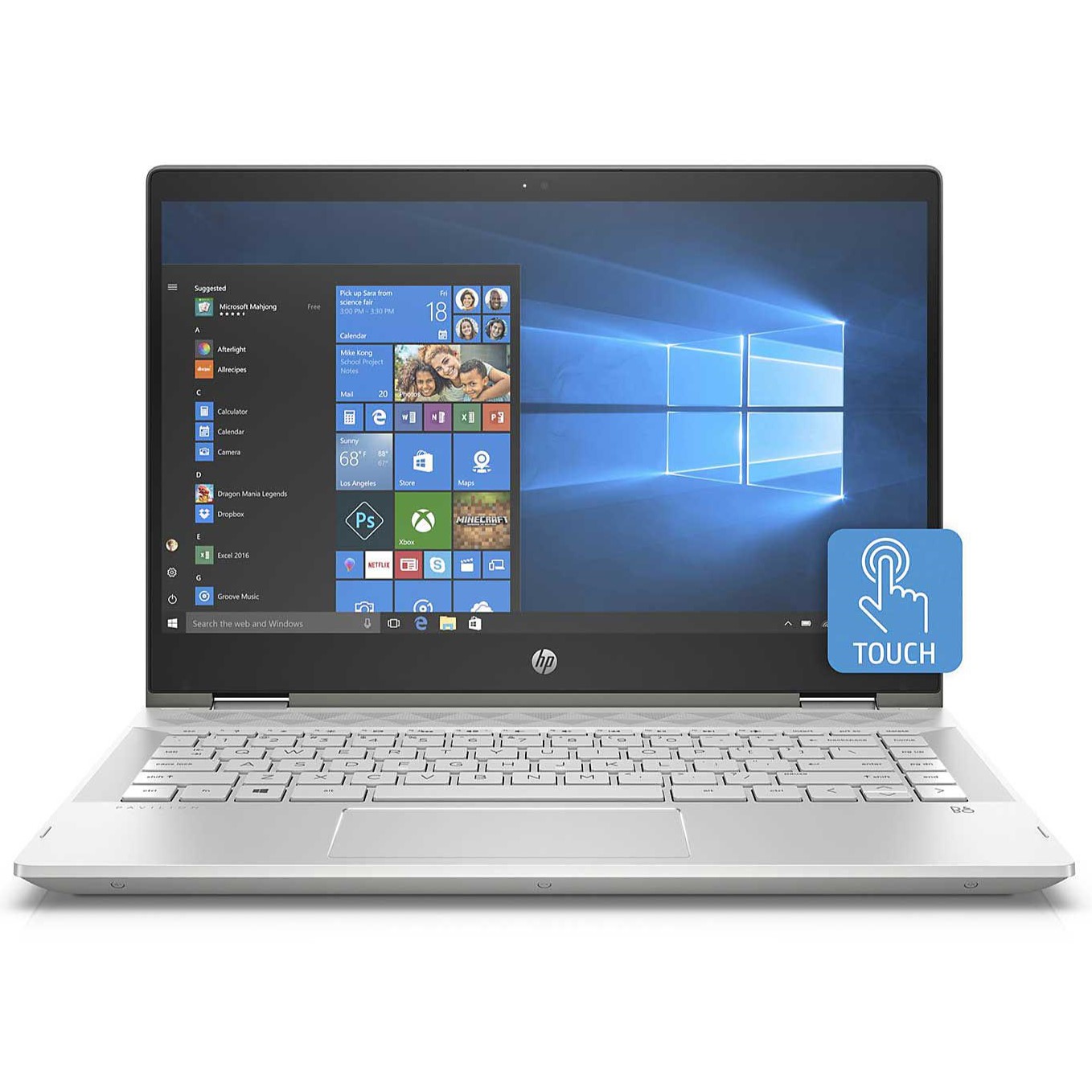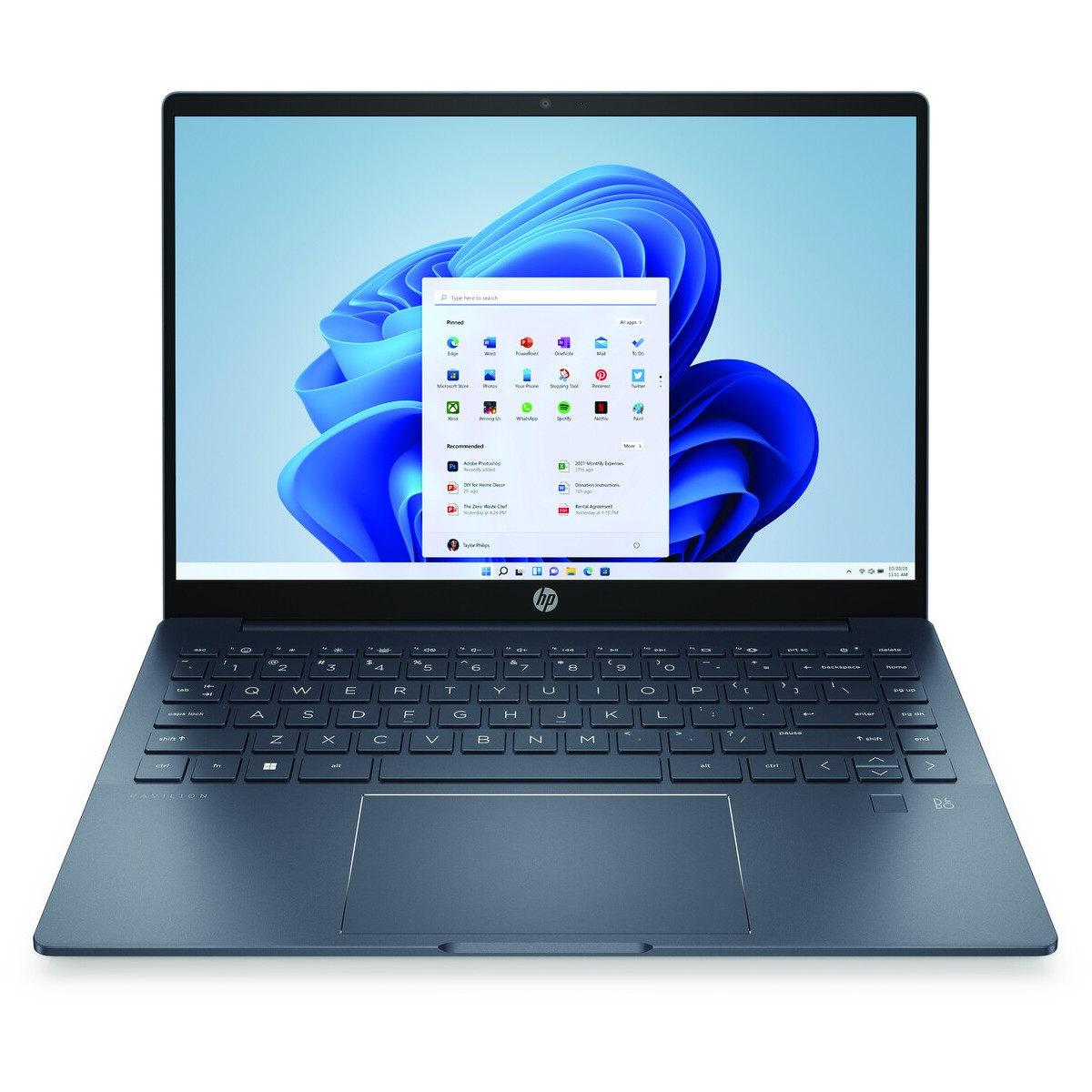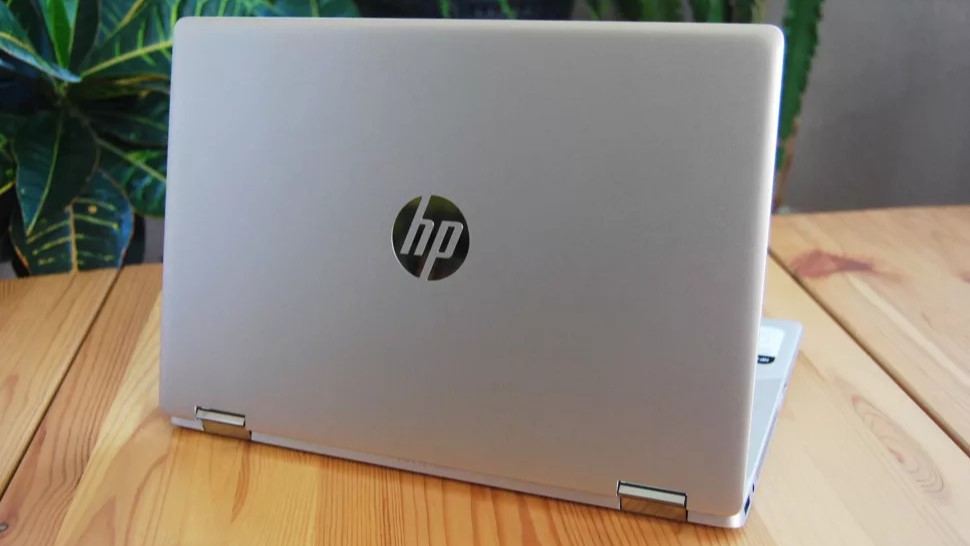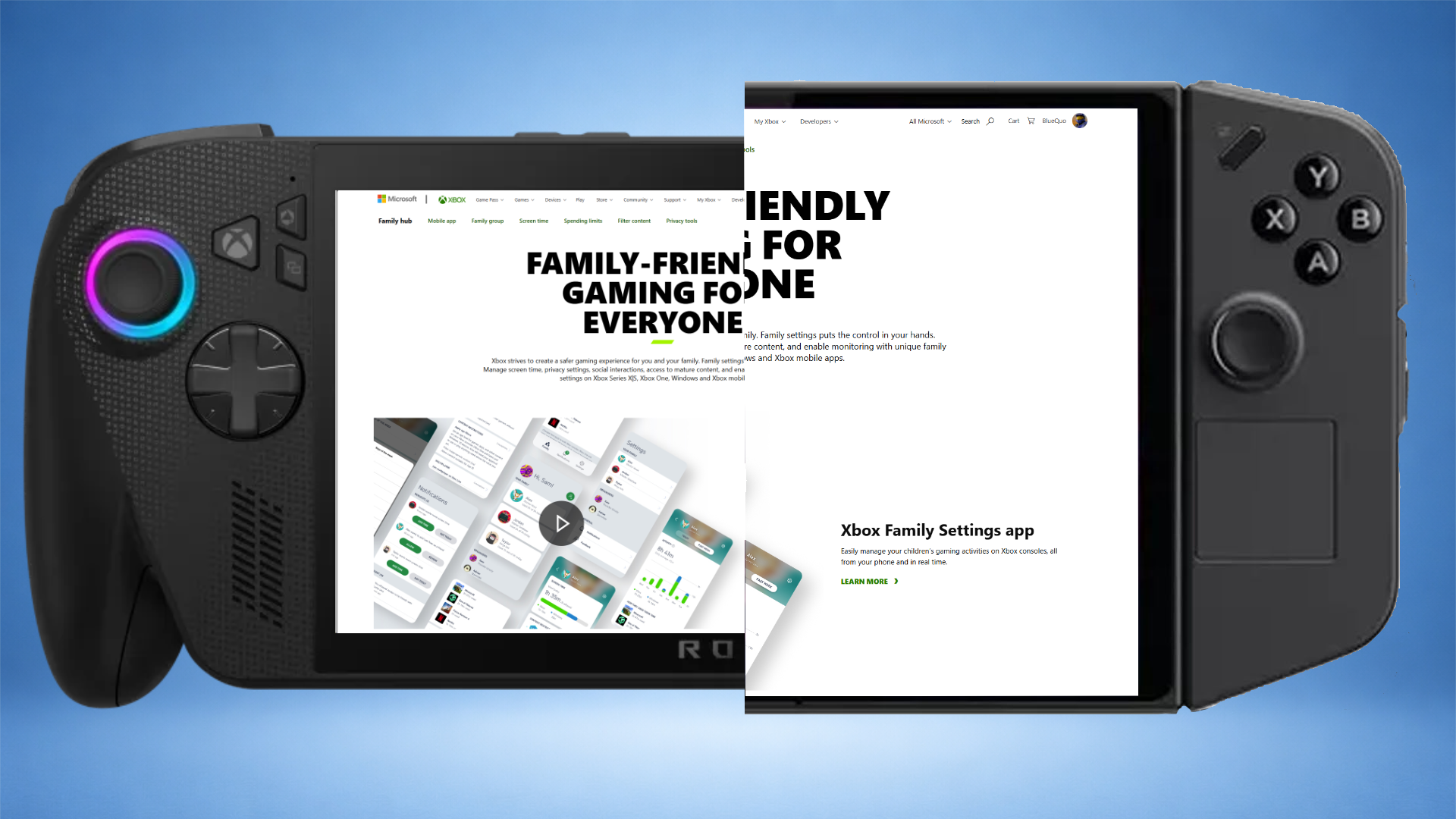HP Pavilion x360 14 vs. HP Pavilion Plus 14
Here's a look at everything you need to know about both of these Pavilion laptops.

Best overall
The HP Pavilion x360 14 will be the best choice if you're looking for something designed for general productivity. Though it's less performant than the Pavilion Plus 14 and only comes with a FHD panel and a single USB-C slot, it offers touchscreen functionality, better battery life, and a lower cost. You can also configure it with 5G connectivity, allowing you to use the device while away from Wi-Fi.
Pros
- 12th Gen Intel CPUs
- Convertible design w/ touch
- Option for 5G
- Better battery life
- More affordable
Cons
- Not quite as performant
- Less impressive display
- Only one USB-C

Best workstation
The HP Pavilion Plus is ideal for folks that need an Ultrabook with some beefier-than-usual hardware, as its dedicated NVIDIA GPUs give it an edge in creative workloads. It also has sharper display options, a better camera, and an extra USB-C port compared to the Pavilion x360 14, though it's also more expensive, has a shorter battery life, and doesn't have an option for 5G connectivity.
Pros
- 12th Gen Intel CPUs
- Dedicated NVIDIA GPUs
- Sharper display
- Better camera
- Extra USB-C port
Cons
- Shorter battery life
- No touch or 5G option
- More expensive
Most people won't need the extra GPU muscle that the HP Pavilion Plus 14 flexes, which makes the HP Pavilion x360 14 the best overall option. While the Plus 14 does come with an impressive display and an extra USB-C slot, we feel that its low battery life makes it a poor choice for general use. The HP Pavilion x360 14, meanwhile, has all-day longevity and great hardware for standard productivity. In short, you should go with the Pavilion x360 14 if you're planning on using your laptop for day-to-day web browsing and productivity, while the Pavilion Plus 14 will be ideal for people that want a powerful Ultrabook that serves well as a docked creative workstation.
HP Pavilion Plus 14 vs. x360 14: Design and specs
Why you can trust Windows Central
In terms of raw performance capabilities, the Pavilion Plus 14 beats the Pavilion x360 14 by a fairly wide margin. Its P and H-series Intel 12th Gen Mobile CPUs are more powerful than the U-series ones that the x360 14 is limited to, and its optional NVIDIA GeForce MX550 and RTX 2050 Laptop dedicated GPUs surpass Intel's integrated Iris Xe graphics as well. Both laptops come with up to 16GB of 3200MHz DDR4 and up to 1TB of SSD storage, giving you plenty of memory and storage to work with.
However, the x360 14 strikes back with its seven-to-nine hour battery life, which dwarfs the Plus 14's meager three-to-five hour runtime. This alone makes the x360 14 the better overall device for most people in our eyes, as you'll constantly need to worry about staying close to a plug if you opt for the Plus 14. Folks that do specialized creative work at a desk all day might not care about that, but if you're in need of something that's mobile and ideal for general productivity, the x360 14 will fill that role much better than the Plus 14 can. You can also configure the convertible with 5G connectivity if you'd like, giving you the ability to go online even when you're not connected to Wi-Fi.
| Header Cell - Column 0 | HP Pavilion x360 14 | HP Pavilion Plus 14 |
|---|---|---|
OS | Windows 11 Home | Windows 11 Home |
Processor | 12th Gen Intel | 12th Gen Intel |
| Row 2 - Cell 0 | Intel Core i7-1255U | Core i7-12700, Core i5-12500H |
| Row 3 - Cell 0 | Intel Core i5-1235U | Core i5-1240P |
| Row 4 - Cell 0 | Intel Core i3-1215U | Core i7-1255U, Core i5-1235U |
Memory | Up to 16GB DDR4-3200MHz | Up to 16GB DDR4-3200MHz |
Graphics | Intel Iris Xe | Intel Iris Xe |
| Row 7 - Cell 0 | Intel UHD | NVIDIA GeForce MX550 |
| Row 8 - Cell 0 | Row 8 - Cell 1 | NVIDIA GeForce RTX 2050 Laptop |
Storage | Up to 1TB PCIe NVMe M.2 SSD | Up to 1TB PCIe NVMe M.2 SSD |
Display | 14-inch, FHD (1920 x 1080), IPS, 250 nits, touch | 14-inch, 2.2K (2240 x 1400), IPS, anti-glare, low blue light, 300 nits, 100% sRGB, TUV+Eyesafe |
| Row 11 - Cell 0 | Row 11 - Cell 1 | 14-inch, 2.8K (2880 x 1800), 400 nits, OLED, 90Hz, low blue light, VESA DisplayHDR 400, 100% DCI-P3, TUV+Eyesafe |
Ports | 1x USB-C, 2x USB-A, 1x HDMI 2.1, 1x AC smart pin, 1x 3.5mm headphone/microphone combo, 1x microSD card reader | 2x USB-C, 2x USB-A, 1x HDMI 2.1, 1x AC smart pin, 1x 3.5mm headphone/microphone combo, 1x microSD card reader |
Audio | Audio by Bang & Olufsen, dual speakers, HP Audio Boost | Audio by Bang & Olufsen, dual speakers, HP Audio Boost |
Wireless | Wi-Fi 6E, Wi-Fi 6, Bluetooth 5.2 | Wi-Fi 6E, Wi-Fi 6, Bluetooth 5.2 |
| Row 15 - Cell 0 | Intel 5G (optional) | Row 15 - Cell 2 |
Camera | HP Wide Vision 720p HD | HP True Vision 5MP (TNR) |
Security | Fingerprint reader (optional) | Fingerprint reader (optional) |
Battery | 43Wh, 7-9 hour battery life | 51Wh, 3-5 hour battery life |
Dimensions | 12.68 x 8.27 x 0.74 in. | 12.34 x 8.83 x 0.65-0.72 in. |
| Row 20 - Cell 0 | 322 x 210 x 19 mm | 313.4mm x 224.2mm x 16.5-18.2 mm |
Weight | 3.35 lbs (1.5 kg) | 3.09 lbs (1.4kg) |
Price | Starts at $800 | Starts at $570 |
Design-wise, both laptops feature the clean and sleek aesthetic many of HP's devices are known for, complete with premium build quality, comfortable keyboards and trackpads, and optional fingerprint readers for Windows Hello security. The Plus 14's 5MP webcam is clearer than the 720p one you'll find on the x360 14, though, and the additional USB-C port it has gives you some extra peripheral connectivity as well.
The Plus 14 also comes with a sharp 300-nit 2.2K anti-glare IPS display that features fantastic color accuracy (there's a 2.8K OLED 400-nit option as well that looks incredible, too). The x360 14's 250-nit FHD IPS panel is pretty unremarkable by comparison, though it doesn't look bad by any means. Notably, one advantage it does have over the snazzy 2.2K and 2.8K screens is that it supports touch, and since HP includes one of its Tilt Pens with every x360 14 purchase, you won't have to spend extra money on a stylus to make use of it.
HP Pavilion Plus 14 vs. x360 14: Which should you buy?
Even though the Pavilion Plus 14 is more performant and capable than the Pavilion x360 14 in several ways, it also has a significantly worse battery life that makes it difficult to recommend as a device for most standard use cases. As a result, the x360 14 will be better for most people, as it still delivers reliable performance for general productivity and web browsing while remaining capable of lasting a full workday on a full charge. Its convertible design, touchscreen, and optional 5G connectivity also give it some flexibility that the Plus 14 doesn't offer.
With that said, the Pavilion Plus 14 is one of the best Windows laptops you can buy if you need a fairly affordable workstation PC that can handle some specialized workloads. As long as you don't mind staying tethered to a plug to keep battery woes at bay, its beefy 12th Gen CPUs and powerful dedicated NVIDIA GPUs will allow you to crush creative tasks that battery life-optimized processors and normal integrated graphics typically struggle with. Those 2.2K and 2.8K displays are absolutely stunning, too.

Best overall
The HP Pavilion x360 14 will be the best choice if you're looking for something designed for general productivity. Though it's less performant than the Pavilion Plus 14 and only comes with a FHD panel and a single USB-C slot, it offers touchscreen functionality, better battery life, and a lower cost. You can also configure it with 5G connectivity, allowing you to use the device while away from Wi-Fi.

Best workstation
The HP Pavilion Plus is ideal for folks that need an Ultrabook with some beefier-than-usual hardware, as its dedicated NVIDIA GPUs give it an edge in creative workloads. It also has sharper display options, a better camera, and an extra USB-C port compared to the Pavilion x360 14, though it's also more expensive, has a shorter battery life, and doesn't have an option for 5G connectivity.
All the latest news, reviews, and guides for Windows and Xbox diehards.

Brendan Lowry is a Windows Central writer and Oakland University graduate with a burning passion for video games, of which he's been an avid fan since childhood. He's been writing for Team WC since the summer of 2017, and you'll find him doing news, editorials, reviews, and general coverage on everything gaming, Xbox, and Windows PC. His favorite game of all time is probably NieR: Automata, though Elden Ring, Fallout: New Vegas, and Team Fortress 2 are in the running, too. When he's not writing or gaming, there's a good chance he's either watching an interesting new movie or TV show or actually going outside for once. Follow him on X (Twitter).


